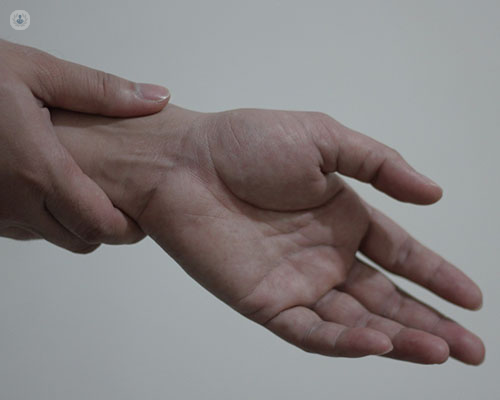How to diagnose osteoarthritis
Autore:Osteoarthritis affects more than 8 million people in the UK and is one of the most common types of arthritis. The condition is caused by the inflammation and eventual loss of cartilage in the joints, especially in the hands, hips, knees, lower back and hands. Cartilage is the protective surface at the ends of the bones in the joints, which allows the joints to move smoothly.

Who is likely to have osteoarthritis?
Osteoarthritis is most likely to occur in adults aged 40 onwards. Young people can be affected as a result of a traumatic injury or from experiencing other joint-related conditions such as rheumatoid arthritis or gout. It can take several years of osteoarthritis to appear following an injury.
Women are more likely to develop osteoarthritis than men. The condition can also affect those who are obese as being overweight causes a strain on weight-bearing joints, such as the knees and hips.
How do you know if you have osteoarthritis?
The main joints in the body feel painful and stiff. If the skin feels warm or appears red around a joint, it is an indication of inflammation. Osteoarthritis is usually diagnosed based on the symptoms and physical signs that are examined by a specialist. The doctor will look for tender joints, creaking sounds, swelling, excess fluid, reduced movement and muscle thinning.
What is the difference between osteoporosis and osteoarthritis?
These are two quite different conditions. Osteoporosis involves the thinning of the bone, which makes it fragile and prone to fracture. This occurs when the bone loses minerals, such as calcium, faster than the body can replace them and leads to a loss of bone density. With the bones becoming thinner, even a minor bump can cause a fracture. Osteoarthritis is a disease in which the damage occurs in the ends of the joints and does not affect the bone density.
How is osteoarthritis diagnosed?
Blood tests do not detect osteoarthritis but can rule out any other types of arthritis. The most useful test to determine the condition is an X-ray, which shows the narrowing of space between the bones, bone spurs, or if any calcium has settled in the joints. An X-ray cannot, however, show the level of pain or disability that osteoarthritis causes in each individual.
Can osteoarthritis be cured and how is it treated?
There is no cure for osteoarthritis but treatments are available to manage the symptoms. Treatment of arthritis includes lifestyle changes, physical therapy, exercise and medication, such as over the counter anti-inflammatories.
Some individuals may benefit from corticosteroid injections to ease the pain of affected joints if painkillers do not work. The injections are normally only applied once every four months, with one single shot.
In rare cases, where other therapies have been ineffective or joints have been severely damaged, surgery may be beneficial. Surgery can involve smoothing the surfaces of the joints or alternatively use an artificial joint to replace the worn-out joint. Joint replacement surgery is most likely to be carried out on the hip or knee.
Can osteoarthritis spread to other joints?
Unlike other types of arthritis, osteoarthritis will not spread through the body. However, more pressure may be put on other joints to compensate, potentially damaging those that were not previously affected. Making lifestyle changes can greatly reduce the risk of the condition getting worse. Losing weight and regular exercise can help.


